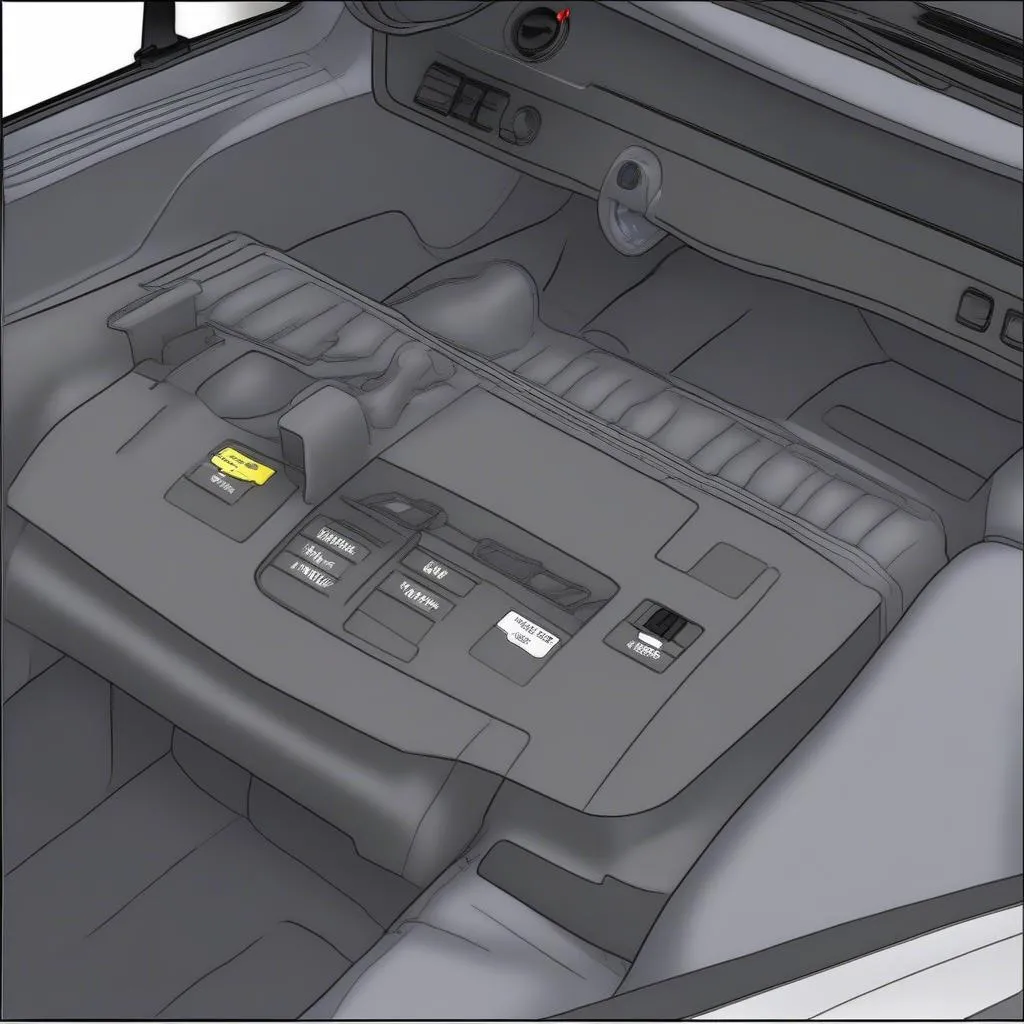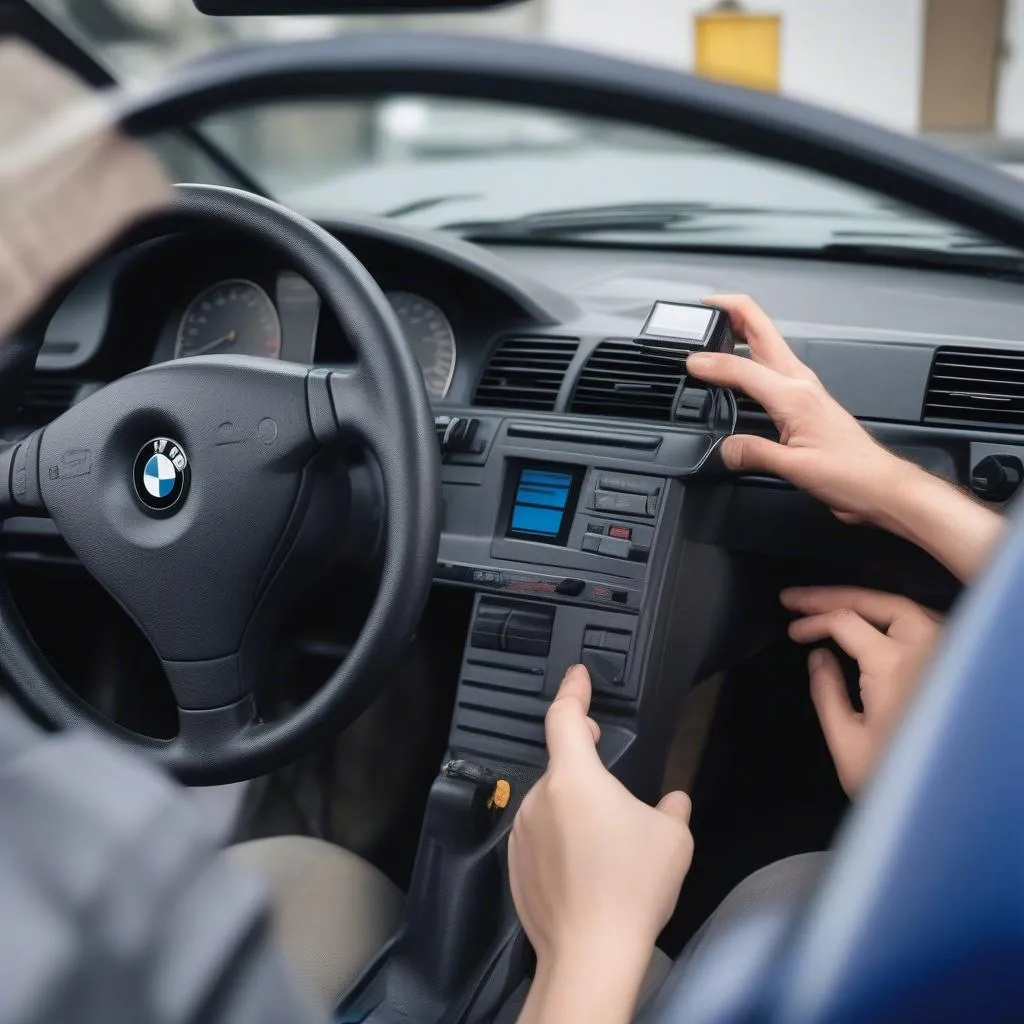You’re working on your beloved BMW E36, and you need to access the diagnostic system. You’ve heard about OBD, but you’re not sure where to find the connector or how to use it. Don’t worry, we’ve got you covered. In this article, we’ll explore everything you need to know about OBD on a BMW E36, from locating the port to utilizing it with a scanner.
Understanding OBD on BMW E36
What is OBD?
OBD stands for On-Board Diagnostics. It’s a system that monitors your car’s performance and can detect potential issues, allowing for early diagnosis and repair. Think of it as a built-in health check for your vehicle.
Why is OBD important on E36?
The E36, a popular model known for its performance and reliability, has a unique set of challenges when it comes to diagnostics. Using OBD is essential for:
- Identifying and troubleshooting engine problems: From misfires to fuel efficiency issues, OBD can provide valuable insights.
- Diagnosing electrical malfunctions: Electrical gremlins are common in older cars like the E36, and OBD can help pinpoint the source.
- Clearing trouble codes: These codes can be a pain, but OBD allows you to reset them and ensure smooth operation.
Locating the OBD Port on your BMW E36
The OBD port on your E36 is typically located under the dashboard, near the driver’s side knee. You’ll find a rectangular connector with 16 pins. Here’s a quick guide to help you find it:
- Look for a plastic cover: The OBD port is often covered with a small, plastic flap.
- Check near the steering column: This is the most common location for the port.
- Use a flashlight if needed: It can be helpful to shine a flashlight under the dashboard to make it easier to find the port.
 Bmw E36 Obd Port Location" width="1024" height="1024">BMW E36 OBD Port Location
Bmw E36 Obd Port Location" width="1024" height="1024">BMW E36 OBD Port Location
Using an OBD Scanner for Your BMW E36
Now that you’ve located the port, it’s time to use it. You’ll need an OBD scanner. These devices connect to the port and read data from your car’s computer.
Selecting the Right Scanner
For a BMW E36, you’ll need a scanner that is compatible with European vehicles. These scanners are specifically designed to communicate with the complex electronic systems used in European cars.
Tips for Using an OBD Scanner:
- Follow the instructions carefully: Each scanner has its own unique set of instructions. Take your time and read them thoroughly.
- Be patient: Connecting the scanner and retrieving data can take a few moments.
- Consult the owner’s manual: Your E36’s owner’s manual may provide additional information about using the OBD system.
 BMW E36 OBD Scanner Usage
BMW E36 OBD Scanner Usage
Common OBD Codes for BMW E36
Here are some common OBD codes you may encounter on a BMW E36:
- P0300 – Random/Multiple Cylinder Misfire Detected: This code indicates a problem with one or more cylinders misfiring. Common causes include faulty spark plugs, ignition coils, or fuel injectors.
- P0171 – System Too Lean (Bank 1): This code suggests that the air-fuel mixture is too lean, meaning there’s not enough fuel being injected. Possible causes include a vacuum leak, faulty oxygen sensor, or a clogged fuel filter.
- P0420 – Catalyst System Efficiency Below Threshold (Bank 1): This code indicates that the catalytic converter is not working properly. This could be due to a damaged catalytic converter, a faulty oxygen sensor, or a problem with the air-fuel mixture.
Troubleshooting with OBD Scanner
An OBD scanner can be a powerful tool for troubleshooting problems with your BMW E36. Here’s a step-by-step guide:
- Connect the scanner: Plug the scanner into the OBD port and turn on the ignition.
- Read the codes: The scanner will display any trouble codes stored in your car’s computer.
- Research the codes: Use the OBD code lookup resources to understand what each code means.
- Diagnose the problem: Use the information from the code and your knowledge of car mechanics to diagnose the problem.
- Repair the issue: Once you’ve identified the problem, repair it.
- Clear the codes: After repairing the issue, use the scanner to clear the trouble codes.
FAQs
Q: Can I use a generic OBD scanner on my E36?
A: While you can use a generic scanner, it may not be able to access all the information available on your E36. It is recommended to use a scanner that is compatible with European vehicles.
Q: Where can I buy an OBD scanner?
A: You can find OBD scanners online and at most auto parts stores. Just make sure you get one that’s compatible with your BMW E36.
Q: What do I do if the OBD scanner is not working?
A: Make sure the scanner is properly connected to the OBD port and that the ignition is on. If the problem persists, try restarting the scanner or contacting the manufacturer for support.
Q: Can I reset my check engine light using an OBD scanner?
A: Yes, you can reset the check engine light using an OBD scanner. However, it’s important to understand that simply clearing the code doesn’t fix the underlying problem.
Conclusion
Understanding the OBD system on your BMW E36 can be invaluable for keeping your car running smoothly. By knowing how to locate the port, use an OBD scanner, and troubleshoot common codes, you can save time and money on repairs. If you have any questions or need additional support, don’t hesitate to reach out to our team of experts.